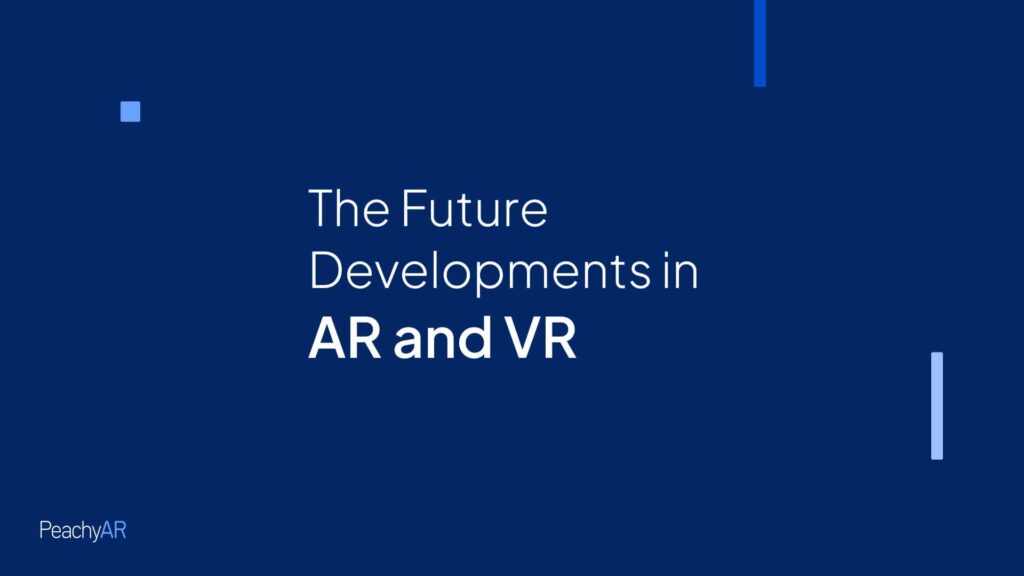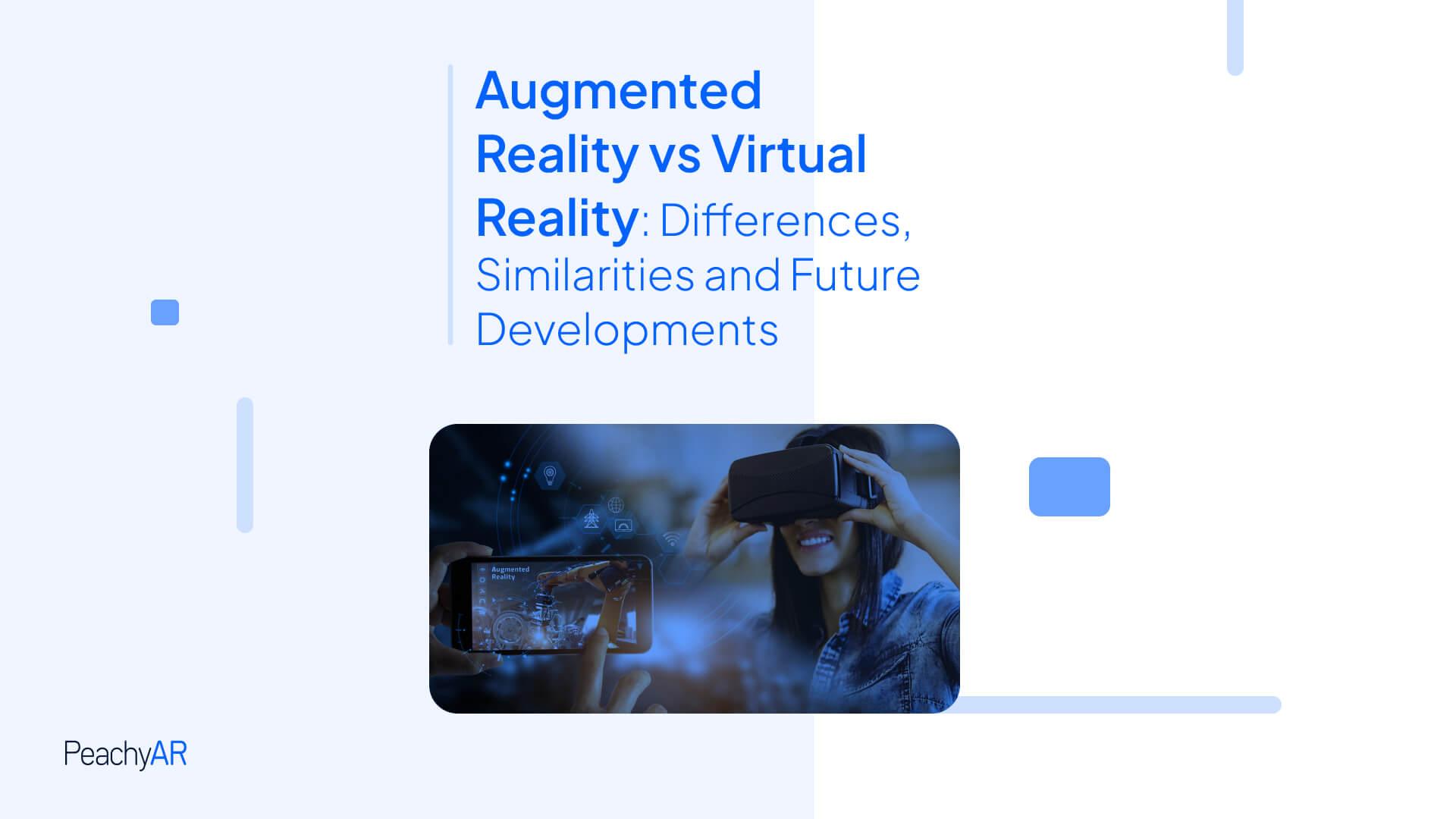AR and VR are two related but distinct technologies that are often used differently. In short, AR overlays digital content in the real world, while VR immerses users in a wholly digital environment.
This tutorial on AR vs. VR provides an overview of the similarities and differences between the two technologies, as well as their developments in the future:
Consider the possibility of stepping into a world vastly different from the one you’re in now – a world where you can manipulate objects, interact with characters, explore environments that seem almost too fantastic to be real, and experience things you never thought possible. This is the promise of virtual reality, a technology that has captured the imagination of millions of people around the world. But what if you didn’t have to leave the real world behind to experience this magic?
What if you could overlay digital information onto the physical world, creating a new kind of reality that merges the best of both worlds? Fortunately, this is also the promise of augmented reality, a technology that has the potential to change the way we live, work, and play.
In this post, we will explore the differences between AR vs. VR, their similarities, and the exciting possibilities that lie ahead. So, if you are a technology enthusiast, a business proprietor, or just someone curious about the future of human-computer interaction, follow along with us. If you want to know more about AR, read Discover All about AR technology.
Differences between AR and VR
AR vs. VR are two related but distinct technologies that are often used differently. Virtual Reality (VR) is a technology that completely immerses users in a digital environment, usually through a headset or other device. VR creates the illusion of a virtual world around the user, allowing them to move and interact with digital objects as if they were real.
VR is commonly used for gaming and entertainment, as well as in training simulations and other applications where users need to practice skills in a safe, controlled environment. On the other hand, augmented Reality (AR) is a technology that overlays digital content on top of the real world, allowing users to interact with both the digital and physical environments simultaneously. AR is commonly used in mobile apps, where a camera captures the real world, and digital elements are added to it in real-time. In short, AR overlays digital content in the real world, while VR immerses users in a completely digital environment.
AR vs. VR Similarities
Despite their differences, AR vs. VR share many similarities regarding the technology they use, the hardware they require, and their potential applications. They Both rely on computer-generated imagery to create their digital content. Both AR vs. VR rely on computer-generated imagery to create their digital content.
In AR, this content is superimposed onto the real world, while in VR, it replaces the real world entirely. Both AR and VR have a wide range of potential applications, including gaming, education, and training. In each field, AR and VR can provide immersive and engaging experiences that are impossible with traditional media.

The Future Developments in AR and VR
Without a doubt, the future of Augmented Reality (AR) and Virtual Reality (VR) is full of promise, with exciting developments on the horizon that could revolutionize the way we interact with technology and each other.
The possibilities for these technologies are endless, from more advanced devices and improved user experiences to new applications in education, healthcare, and beyond. Many AR and VR examples already show these extraordinary technologies, and we can expect more advanced ones in the future.
What’s Next for VR?
Looking into the future, the realm of virtual reality (VR) is expected to become more accessible and immersive. This can be attributed to the advancements in technology that are taking place. One of the most notable developments in VR is improved hardware. As time progresses, VR devices are projected to become more powerful and cost-effective, with better tracking, high-quality displays, and intuitive controls.
Moreover, VR environments will become more realistic and detailed, offering more convincing and immersive experiences thanks to accurate physics and lighting. Lastly, social interaction in VR is expected to be more prevalent, allowing people to connect with others in virtual environments, collaborate on projects, attend events, and take part in shared experiences. Overall, it is clear that the future of VR technology is set to be more exciting and interactive, with a world of possibilities for users to explore.
What’s Next for AR?
As for Augmented Reality (AR), we expect it to become more widespread and advanced, with a range of improvements. One of the key areas of development will be in the devices themselves, with better hardware and software that can create more realistic and immersive experiences.
The user experience is also expected to become more intuitive and user-friendly, with improved interfaces and natural interaction methods such as gesture recognition and voice control. Another area of growth will be in the number of applications of AR technology as it finds its way into more industries, such as education, healthcare, and retail, providing new and innovative ways to enhance and interact with the world around us.
What About Online AR?
We may also predict a promising future for online AR, a subset of augmented reality technology that enables users to see augmented reality material through a web browser without using specialized hardware or apps. One area of growth for online AR is e-commerce and advertising. As more businesses look to leverage AR technology to create engaging, interactive experiences for customers, we can expect to see an increasing number of online retailers and advertisers incorporating AR into their websites.
Another area of growth for online AR is education and training. As technology improves and becomes more accessible, we can expect to see a broader range of educational and training applications utilizing online AR. We can also expect to see improvements in the technology itself, with advancements in areas such as computer vision, machine learning, and 5G networks helping to make online AR experiences more seamless, realistic, and responsive.
Conclusion
In conclusion, both augmented reality and virtual reality have the potential to revolutionize the way we interact with the world around us. While augmented reality enhances our real-world experiences by adding digital information and objects, virtual reality creates immersive digital environments that can transport us to entirely new worlds.
But when it comes to choosing between the two, it ultimately depends on your specific needs and goals. As technology advances, we may expect to see even more fascinating innovations in augmented reality and virtual reality.





